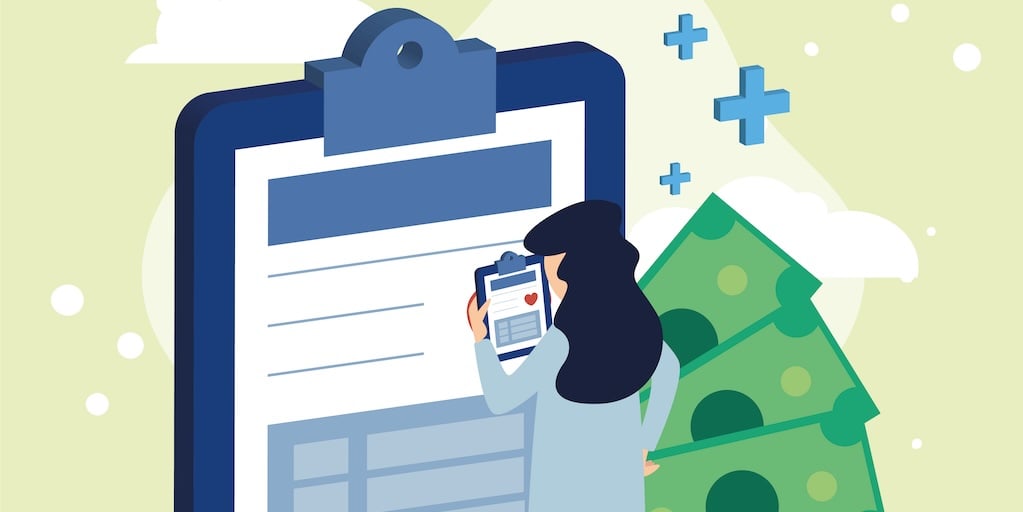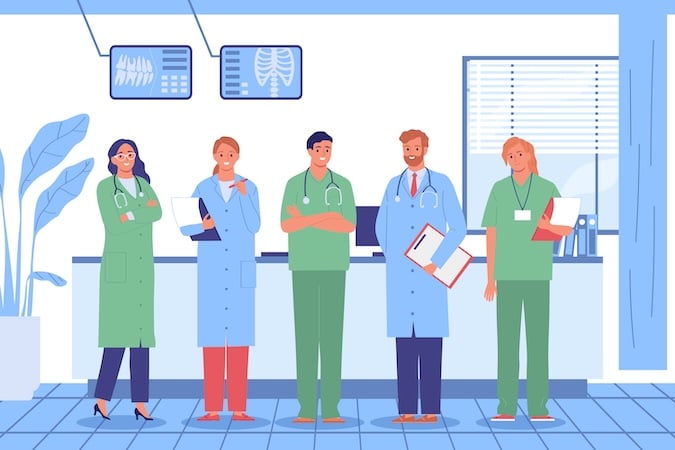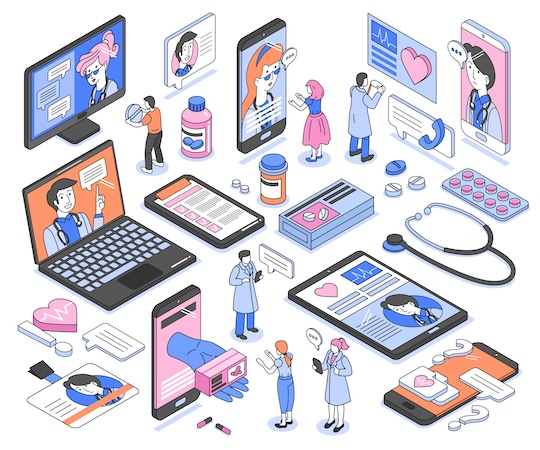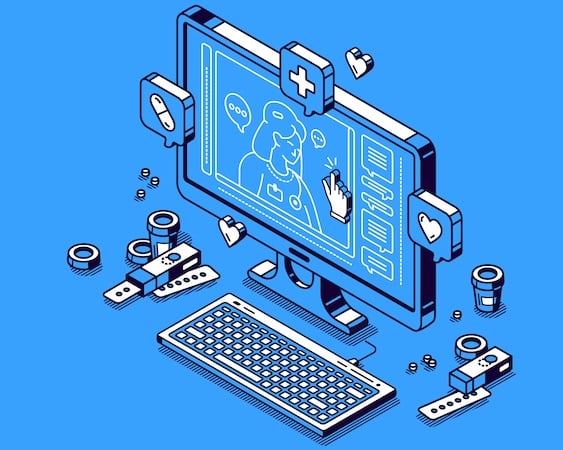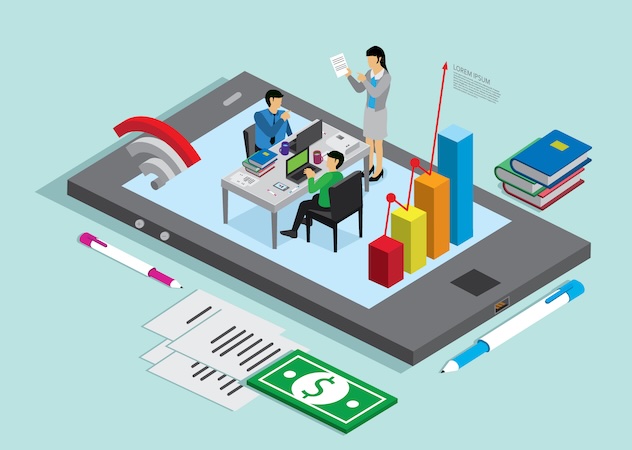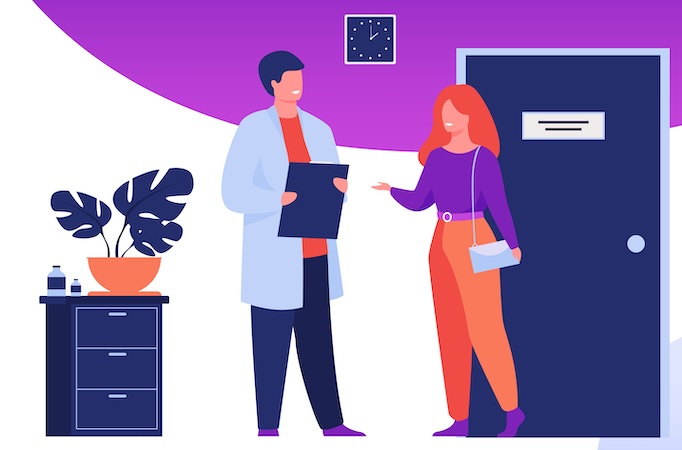Welcome, health app trailblazers! If you’ve landed on this blog, chances are you’re knee-deep in digital health and looking for the secret sauce to selling software to hospitals. Well, you’re in luck! We at Topflight are here to guide you through this intricate healthcare industry labyrinth.
Let’s start with a simple truth: selling an app to a hospital isn’t just about having a great product. It’s about understanding the entire healthcare ecosystem – from the nitty-gritty of hospital operations to the gatekeepers who hold the keys to adoption. It’s about building relationships early and integrating your app into their existing systems, specifically EHRs.
Your app isn’t just another standalone tool but a valuable addition to the hospital’s existing digital (eco)system. It seamlessly fits into their workflow, making life easier for every stakeholder, from doctors and nurses to IT staff and administrators. Now, that’s a value proposition!
But wait, there’s more. As you navigate this journey, you will face some tight security requirements. Hospitals are fortresses when it comes to patient data, so expect to sign a BAA and be prepared to answer some tough questions about how you handle PHI. Don’t worry; we’ve got your back. However, let’s not jump the gun here.
In our upcoming sections, we’ll dive deeper into these topics, shedding light on identifying the right hospitals for your app, developing compelling offerings, navigating procurement cycles, and building lasting relationships with key decision-makers. So buckle up and get ready for a journey through the exciting world of healthcare technology. With the proper knowledge, strategy, and partner by your side, selling your app to hospitals can be less of a daunting task and more of an exciting journey.
Top Takeaways:
- Understanding is Key: To successfully sell software as a service to hospitals, it’s crucial to comprehend the entire healthcare ecosystem. This includes the nitty-gritty of hospital operations, their decision-making processes, and how your app can seamlessly integrate into their existing systems.
- Highlight Specific Benefits: When you’re ready to sell your online app to a hospital, make sure you clearly articulate the specific benefits it offers. Does it improve operational efficiency? Does it help save costs? Does it enhance patient care? These are the selling points that will resonate with hospital decision-makers.
- Relationships Matter: Don’t underestimate the power of relationships in this process. Building trust with hospital decision-makers and engaging early adopters are critical steps in successfully selling your app to hospitals. Remember, people buy from people they trust. So make relationship-building a cornerstone of your strategy.
Table of Contents:
- The Nitty-Gritty of Hospital Operations and Decision-Making Processes
- Meet the Gatekeepers: Key Stakeholders in Hospitals
- A World of Opportunities: Challenges Hospitals Face that Your App Can Solve
- Checklist for Success: Must-have Healthcare App Features for Hospitals
- Finding Your Target: The Importance of Market Research
- Making Them Want You: Developing a Compelling Value Proposition
- Playing by Their Rules: Procurement and Legal Processes
- After the Sale: Implementation and Support
- Making the Sale: Our Tips for Effective Pitching and Relationship Building
- How We Can Help: Your Partner in Navigating the Healthcare Ecosystem
The Nitty-Gritty of Hospital Operations and Decision-Making Processes
Ever wondered what happens behind the scenes at healthcare organizations? Or how decisions are made in these complex ecosystems? Well, you’re about to get a backstage pass. Understanding hospital operations and decision-making processes is a crucial step in your journey to sell software to hospitals.
Understanding Hospital Operations
Hospitals are like complex puzzles with multiple pieces that need to fit together perfectly. From administration and billing to patient management and diagnostics, each department has its own unique needs and challenges. This complexity is further amplified by the strict rules around public spending, particularly in the United States.
But don’t let this complexity intimidate you. Instead, use it to your advantage. Understanding these intricacies can help you tailor your app to meet the specific needs of different departments, adding value where it’s most needed.
Bracing yourself for the hierarchical labyrinth of a hospital’s department might sound daunting, but here’s a nugget of wisdom: knowledge is power. To sell your software, you need to:
- Map out the hierarchies that govern the department that will benefit most from your app: Picture a pyramid, with the CMO/CIO at the top, specialists and department heads in the middle, and the IT team intricately webbed throughout the structure.
- Evaluate their existing software systems: Understand the EHRs, RCM software, and other digital tools they’re currently using. How saturated is their digital ecosystem, and where does your solution slot in?
- Identify the key departmental challenges: What are the pain points at the ground level? How does your app alleviate these specific issues?
- Highlight the metrics your app impacts: It’s not just about what your app does; it’s about the outcomes – reduced wait times, fewer data entry errors, and better patient satisfaction.
Navigating the Decision-Making Process
Decision-making in hospitals often involves a hierarchical structure, with multiple stakeholders playing key roles. These could include IT departments, clinicians, administrators, procurement teams, and even patients. Each stakeholder has their own set of priorities, be it patient care, cost-effectiveness, regulatory compliance, or risk minimization.
Understanding these priorities and aligning your app with them can significantly boost your chances of success. For instance, demonstrating how your app can improve patient outcomes or reduce costs can make a compelling case for its adoption.
Building Relationships Early
Remember, selling to hospitals is not a sprint; it’s a marathon. Based on our experience with other health app founders, it often takes longer to sell to the system than to build an app. That’s why it’s crucial to start building relationships early, particularly with IT departments, who play a pivotal role in the adoption of new technologies.
To ensure the success of your healthcare app, it is crucial to establish strong collaborations with various stakeholders. Here are key relationships to prioritize as you begin developing your app:
- Cooperate with the hospital’s IT team to align your app with their infrastructure and requirements.
- Engage with other health software service providers, such as EHR vendors, for seamless integration of your app into existing systems.
- Build relationships with end users, specifically healthcare specialists, who will benefit from and utilize your app.
By nurturing these relationships from the early stages of app development, you can enhance its marketability and expedite adoption within hospitals.
Addressing Security Concerns
Hospitals are fortresses when it comes to patient data. Expect security requirements to be strict, and be prepared to sign a Business Associate Agreement (BAA). This agreement ensures that you comply with PHI data handling and patient privacy regulations, which are non-negotiable when dealing with healthcare organizations.
Keeping the MVP Focused
When developing your Minimum Viable Product (MVP), it is crucial to focus on the highest value proposition. This can be achieved by thoroughly analyzing the key hospital metrics that the product will impact and understanding their hierarchy in meeting the hospital’s needs. Some key metrics to consider include:
- Cost per procedure
- Length of stay
- Readmission rates
- Patient satisfaction scores
By prioritizing the value proposition based on these metrics, you can develop a healthcare app that is aligned with the hospital’s goals of delivering high-quality care while managing costs effectively.
Meet the Gatekeepers: Key Stakeholders in Hospitals
Now that we’ve delved into the inner workings of hospital operations, it’s time to introduce you to the gatekeepers – the key stakeholders in hospitals. These are the people who hold the keys to the doors you want to unlock. Understanding their roles and responsibilities and building relationships with them is crucial when you’re selling medical software.
Hospital Administrators
These are the folks who oversee the overall operations of the hospital. They’re responsible for budgeting, strategic planning, and decision-making. They also have the authority to green-light the adoption of new technologies and software within the hospital.
IT Professionals
IT professionals evaluate the technical feasibility, compatibility, and security of your software. They ensure that your software integrates seamlessly with existing systems and meets the hospital’s IT infrastructure requirements. Building a relationship with these tech wizards can be a game-changer.
Physicians and Healthcare Providers
These are most likely the end-users of your software and have a direct impact on patient care. Their input is invaluable in the decision-making process. After all, if your software doesn’t meet their needs or improve their workflow, it won’t be adopted.
Compliance and Legal Teams
These teams are tasked with ensuring that your medical software complies with healthcare regulations and standards. They review data security and patient privacy measures and the application’s adherence to legal requirements. Crossing all the t’s and dotting all the i’s with this group is essential.
Also Read: HIPAA-Compliant App Development Guide
Procurement and Purchasing Departments
These departments handle the procurement process for new software in hospitals. They evaluate vendors, negotiate contracts, and manage the purchasing process. Winning them over can put you on the fast track to success.
Nevertheless, it’s important to bear in mind that you most likely win the procurement and purchasing departments over only after securing buy-in from all other stakeholders, as their decisions are deeply influenced by the collective nod of approval from the interconnected web of personnel who place their trust in the efficiency and security of your software solution.
C-Suite Executives
C-suite executives, like the CEO, CFO, and CIO, provide strategic direction and make final decisions based on the recommendations of other key stakeholders. Captivating their attention can be a significant milestone in your journey.
Depending on the nature of your software and the peculiarities of any given hospital, you may also need to engage with the following groups:
- Key Opinion Leaders and Influencers: These respected figures in the healthcare industry can provide endorsements that build credibility and trust in your software among various stakeholders.
- Patient Advocates and Representatives: These individuals ensure that your software aligns with patient needs and enhances the overall patient experience. Their input is invaluable in shaping your app to meet the expectations of end-users and patients.
- Department Heads and Managers: These stakeholders play a crucial role in ensuring that your software meets the specific needs and workflows of their respective departments. Gaining their buy-in can lead to wider adoption within the hospital.
Early Adopters and Pilot Sites
Engaging with early adopters and pilot sites within hospitals can give you valuable feedback for further improvement and demonstrate the value of your software. Remember, customer feedback from these early adopters is worth its weight in gold, so be prepared to iterate rapidly based on their insights.
Understanding the roles and responsibilities of these gatekeepers is essential when selling medical software to hospitals. Building relationships with these decision-makers requires trust and patience. But remember, the journey of a thousand miles begins with a single step. So start building those relationships today, and watch as the doors to success open for you.
A World of Opportunities: Challenges Hospitals Face that Your App Can Solve
Now that we’ve navigated the labyrinth of hospital operations and met the gatekeepers, it’s time to explore a world full of opportunities. These opportunities lie in the challenges hospitals face daily – challenges that your app can solve. And guess what? Solving these challenges is your ticket to sell an app in bulk to hospitals.
Understanding the Challenges
Hospitals are under tremendous strain, with data living in silos and health networks struggling to keep up with the pace of innovation. They’re grappling with resource and staff shortages. The need for updated resources and data infrastructure is more urgent than ever.
- An estimated 83% of medical devices run on out-of-date operating systems, indicating a predominant reliance on legacy software within the healthcare sector.
- In a recent survey, 90% of tech leaders in healthcare organizations reported losing revenue due to inefficient data usage, highlighting the significant financial impact of outdated and ineffective technology.
- Outdated technology in US hospitals causes communication delays of around 45 minutes, resulting in inefficiencies and incurring an annual expense of $8.3 billion.
Furthermore, hospitals are looking to maximize efficiency and improve patient outcomes while facing complex procurement procedures and change resistance.
Sounds overwhelming, right? Well, this is where you step in. By understanding these challenges, you can tailor your app to address them effectively, positioning it as the solution hospitals need.
Your App: The Solution
Your app has the potential to revolutionize hospital operations. Let’s break down how:
- Streamlining Operations: Your app can help streamline patient management, scheduling, administrative tasks, and billing processes. This leads to increased efficiency and cost-effectiveness – music to any hospital administrator’s ears. When considering the healthcare app development cost, it is important to weigh the long-term benefits against the initial investment.
- Enhancing Communication: Your app can enhance communication and collaboration among healthcare professionals, departments, and even patients. Improved communication means fewer errors, better patient care, and a smoother workflow.
- Improving Patient Care: Your app can help improve patient outcomes, reduce readmission rates, and increase patient engagement and empowerment. Remember, at the core of every hospital operation is patient care. If your app can enhance it, you’ve hit the bullseye.
- Data Security and Compliance: Your app can help ensure data security, patient privacy, and compliance with healthcare regulations. By doing so, you’re not just addressing a major challenge but also building trust – a key factor when looking to sell an app to hospitals.
- Integration: Your app’s ability to integrate with existing systems, particularly Electronic Health Records (EHR), can be a game-changer. Seamless integration means minimal disruption to the workflow, making it more likely for your app to be adopted.
- Creating New Revenue Streams: Ever heard of the saying, “Money makes the world go round”? Well, it’s no different for hospitals. Your app can open up new avenues for revenue generation. For instance, a remote patient monitoring platform could allow hospitals to provide care to more patients without increasing physical infrastructure or hiring additional staff. This could be a significant game-changer, especially in times of a pandemic when remote care is not just preferred but often necessary. And hey, who doesn’t like a bit of extra cash flowing in?
- Reducing Operating Costs: Now, this one’s a clincher. Hospitals are always looking for ways to cut costs without sacrificing the quality of care. If your app can help reduce operating costs – say, by automating administrative tasks or optimizing resource allocation – you’ve got yourself a winner. After all, less money spent on operations means more money that can be invested back into patient care.
Also Read: App Development Costs: The Complete Breakdown
Understanding the challenges hospitals face provides a world of opportunities for your app. It allows you to tailor your solutions to their specific needs, making your app an invaluable tool in their arsenal. So, as you continue on your journey to market software to hospitals, remember the words of Albert Einstein: “In the middle of difficulty lies opportunity.”
Checklist for Success: Must-have Healthcare App Features for Hospitals
If you’re looking to sell software to healthcare companies, it’s crucial to understand what hospitals are really looking for in an app. The perfect healthcare app not only has to solve a problem but also needs to fit seamlessly into the existing ecosystem. Here are a few must-have features to consider:
- Compliance with Healthcare Regulations: This is non-negotiable. Your app must comply with all relevant healthcare regulations, such as HIPAA in the US. This ensures that patient data is protected and that hospitals can trust your app with their sensitive information.
- Integration with Existing Systems: Electronic Health Records (EHR) are an integral part of hospital operations. If your app can integrate smoothly with EHR systems, it will be much easier to sell to healthcare companies. This allows hospitals to keep using their existing infrastructure while benefiting from the additional functionality of your app.
- User-friendly Design: The Unseen Hero: In the fast-paced world of healthcare, there’s no time for complicated interfaces. Your medical app design needs to be intuitive and easy to use. After all, a tool is only as good as its user’s ability to use it effectively.
- Data Security and Patient Privacy: More Than Just a BAA: Beyond being a legal requirement, robust data security is an absolute necessity in healthcare. Hospitals need to know that their patient data – some of the most sensitive data there is – will be safe in your health app.
- Long Sales Cycle Understanding: Selling to hospitals is a marathon, not a sprint. Your app should ideally have features that allow for long sales cycles, like extensive free trials or modular implementation.
- Target Market Understanding: Lastly, but perhaps most importantly, your app should meet the specific needs of your target audience. Whether it’s a scheduling tool for nurses or a communication platform for doctors, make sure your app solves a real problem faced by your target market.
Of course, the features that endear your app to its users will be uniquely tailored to your target audience’s needs; what delights paediatricians will differ from what resonates with paramedics. But without these essential boxes checked, selling your app to a hospital becomes a towering challenge.
In the end, selling an app to hospitals is about more than just having a great product. It’s about understanding the unique challenges and needs of the healthcare sector and providing a solution that fits. So, as you develop your app, keep these features in mind to increase your chances of success.
Finding Your Target: The Importance of Market Research
Understanding your target market is the cornerstone of selling medical software to hospitals. It’s not just about developing a great app; it’s about ensuring that your app meets the needs of the right audience. Here’s how you can do it.
Identifying the Right Hospitals for Your App
Your app might not be a perfect fit for every hospital. Therefore, it’s crucial to identify the hospitals that align with your app’s goals and target audience.
- Market Research: Conduct thorough research to understand factors like hospital size, location, specialties, and patient demographics. For instance, a large metropolitan hospital may have different needs than a small rural one.
- Openness to New Technology: Look for hospitals that are forward-thinking and open to adopting new technology. These hospitals are more likely to be interested in your innovative solution.
- Align with Your Goals: Ensure that the hospitals you target align with your app’s goals. For example, if your app is designed to improve patient care, target hospitals that prioritize patient satisfaction.
Understanding the Needs and Pain Points of Different Hospital Departments
Each department within a hospital has unique challenges and pain points. Understanding these can help tailor your app to their needs.
- Deep Dive into Operations: Spend time understanding the operations of various hospital departments. This could involve interviewing healthcare professionals or conducting surveys.
- Tailor Your App: Use this information to tailor your app’s features to each department’s needs. Remember, an app that solves real problems is more likely to be adopted.
Making a Competitive Analysis: Know Your Enemies
You’re not the only one trying to sell medical software to hospitals. It’s essential to understand your competition and how you can differentiate your app.
- Analyze the Competition: Conduct a comprehensive analysis of your competitors. Identify their strengths, weaknesses, and unique selling points.
- Differentiate Your App: Highlight your app’s unique features and benefits. Show how it provides better solutions compared to existing options.
Work Together
Collaboration is key when you’re trying to break into the healthcare market.
- Understand Specific Requirements: Collaborate with hospitals to understand their specific requirements. Seek feedback from hospital staff and decision-makers to continuously improve your app’s functionality and usability.
- Establish Partnerships: Establishing partnerships or alliances with hospitals can build trust and credibility in the healthcare industry.
Embrace New Technology
The healthcare industry is constantly evolving, and staying up-to-date with the latest advancements can give your app a competitive edge. Working with experienced healthcare app developers plays a crucial role in creating innovative solutions that improve patient care and streamline processes.
- Stay Updated: Incorporate new technologies into your app to provide innovative solutions. This could be anything from artificial intelligence to telemedicine.
- Highlight Benefits: Show how your app uses new technology to enhance patient care and improve hospital operations.
In conclusion, selling medical software involves understanding your target market deeply. With thorough market research, you can tailor your app to meet the specific needs of hospitals, giving it a competitive edge in the healthcare industry.
Making Them Want You: Developing a Compelling Value Proposition
In the realm of healthcare, relationships are everything. If you’re part of a system, let that be your starting point. Your pre-existing relationships could open doors that might otherwise remain closed. Remember, hospitals are under no obligation to serve as pilot sites, and very few will be compelled to do so without proven traction. So, in the early stages, it’s essential to view their participation as a favor, not an obligation.
Now, let’s explore how to craft a compelling value proposition and make hospitals want to buy your app:
Highlighting the Benefits of Your App to Hospitals
To sell an online app in bulk to hospitals, it’s crucial to emphasize the specific benefits your app offers:
- Solving Challenges: Identify the unique challenges hospitals face and explain how your app addresses these issues. The more specific you can be, the better.
- Improving Operations: Demonstrate how your app can streamline processes, improve efficiency, and positively impact patient care.
- Saving Costs: Show how your app can lead to significant cost savings, a major selling point for budget-conscious healthcare institutions.
Targeting Your Message for Different Stakeholders
Different stakeholders within a hospital have different priorities. Tailor your message to resonate with each group:
- Administrators: Explain how your app can improve hospital management and operations.
- Clinicians: Show how your app can enhance patient care and simplify their workflow.
- IT Staff: Highlight your app’s seamless integration with existing systems and robust data security features.
Using Pilots: Show, Don’t Tell
Offering pilot programs is an effective way to demonstrate your app’s value:
- Low-risk Trial: A pilot program allows hospitals to test out your app in a controlled environment, making it a low-risk proposition.
- Gathering Feedback: Use pilots to gather valuable feedback and make necessary improvements to your app. Be prepared to iterate rapidly based on the feedback you receive.
Leveraging Existing Relationships and Early Adopters
In the early stages, getting your app into the hands of early adopters in the hospital is invaluable. Their feedback can help you fine-tune your app and improve its appeal:
- Identify Early Adopters: Look for individuals within the hospital who are open to trying new solutions and could benefit from your app.
- Leverage Feedback: Use the feedback from these early adopters to iterate and improve your app rapidly. Their insights will be worth their weight in gold.
Remember, it’s not just about building software; it’s about building relationships. The connections you forge with software companies, hospital staff, and decision-makers form the foundation of successful partnerships. By focusing on these relationships, tailoring your message to different stakeholders, and demonstrating your app’s value through pilot programs, you’ll be well on your way to successfully sell an online app in bulk to hospitals.
Playing by Their Rules: Procurement and Legal Processes
So, you’re eager to market an app to hospitals. But before you can start celebrating, there’s a significant hurdle to overcome: the procurement and legal processes. Navigating this landscape can be daunting, but with some understanding and patience, it’s entirely possible. Let me share what we’ve learned at Topflight from our experiences in this realm.
Understanding Hospital Procurement Cycles
Unlike other industries, hospitals operate on long procurement cycles. The reason is simple: they want to ensure they’re making the right decisions for their patients and staff. This means you’ll need patience and tenacity. Remember, selling an app isn’t just about demonstrating its value but also about aligning with the hospital’s procurement timelines.
Preparing for Legal Reviews and Contract Negotiations
Legal reviews and contract negotiations can be complex, especially when dealing with software companies. However, they’re crucial steps in ensuring your app meets all necessary regulatory and compliance standards. Be prepared to answer questions about patient data privacy, security protocols, and compliance measures. Having a lawyer who specializes in health tech can be a huge asset during this process.
Always remember that each hospital has its own set of rules, procedures, and decision-making processes. The key is to understand them and play by them. It’s all part of the game when you’re looking to sell a healthcare app to hospitals.
So, brace yourselves for a journey filled with paperwork, legal jargon, and seemingly endless waiting periods. But trust me, with the right mindset and preparation, you’ll find yourself well-equipped to navigate these processes. And when you finally get your app into the hands of healthcare professionals, it’ll all be worth it.
After the Sale: Implementation and Support
So, you’ve managed to market software to hospitals, and they’ve bought into your vision. Congratulations! But let’s not pop the champagne just yet. Your journey is far from over. Now comes the critical phase of implementation and support. Let’s dive in, shall we?
Implementation: Making Your App Part of Their Routine
Remember when you first learned to ride a bike? It was probably a bit shaky at first. But with time, you got the hang of it, and now it’s like second nature. The same goes for implementing your app in a hospital setting.
Related: EHR Implementation Guide
The key here is to make the transition as smooth as possible. Provide comprehensive training to all users, ensure the app integrates seamlessly with existing systems, and be prepared to iron out any initial hiccups. Remember, patience and perseverance are your best friends during this phase.
Support: Being There When They Need You
Ever been stuck with a tech problem, desperately trying to reach customer support, only to be met with an automated message? Frustrating, right? Don’t be that company. Be there for your customers when they need you. Offer timely and effective support to keep things running smoothly. This will not only help retain your current customers but also attract new ones.
Starting Proper Sales Channels: The Next Step
Now that you’ve successfully sold your app to a hospital, it’s time to spread the word and scale up. Here are some tips on how to do that:
- Sales Team: Building a dedicated sales team is crucial. They’ll be the ones driving your growth, establishing relationships with potential customers, and closing deals.
- Marketing Strategy: Crafting an effective marketing strategy is key. This should include content marketing, social media, and marketing campaigns tailored to your target audience.
- Content Marketing: Sharing valuable content can establish you as an authority in your field and attract potential customers. Whether it’s blog posts, white papers, or webinars, make sure your content resonates with your audience.
- Social Media: Utilizing social media can greatly enhance your visibility. Share updates, engage with your audience, and showcase your app’s success stories.
- Marketing Campaigns: Running targeted marketing campaigns can drive lead generation. Remember, it’s not just about quantity but quality. You want leads that are likely to convert into customers.
In the end, remember that selling your app to a hospital is just the beginning. The real work begins after the sale. With effective implementation, dedicated support, and a robust sales and marketing strategy, you can ensure your app’s success in the long run.
Making the Sale: Our Tips for Effective Pitching and Relationship Building
Brace yourself, dear reader, because we’re about to dive into the thrilling finale of this journey. You’ve done your homework, built an amazing app, and you’re ready to start selling healthcare software to hospitals. So, how do you seal the deal? Let’s find out.
Building Relationships with Hospital Decision-makers
Just like a gardener nurturing their plants, building relationships with hospital decision-makers requires time, effort, and patience. These folks hold the keys to the kingdom, and gaining their trust is crucial. Show them that you understand their needs, and demonstrate how your app can make their lives easier and their hospital more efficient. Your relationship-building skills will be just as important as the quality of your app in this high-stakes game.
Preparing for Airtight Security Requirements
When it comes to hospitals, security isn’t just a fancy add-on—it’s a necessity. Expect to sign a Business Associate Agreement (BAA) and be prepared to handle detailed data handling questions. At Topflight, we can assist you in preparing for organizational safeguards and handling technical safeguards, but ultimately, you’ll need to control how your organization handles Protected Health Information (PHI).
Leveraging Existing Relationships
If you’re part of a healthcare system, use that to your advantage! Those relationships you’ve cultivated could be your golden ticket to getting your foot in the door. Remember, at the early stages, hospitals aren’t obligated to pilot your app, so any traction you can get is a huge win.
Integrating with a Single EHR
Trying to integrate with every Electronic Health Record (EHR) system at once is like trying to juggle flaming swords while riding a unicycle—it’s not going to end well. Instead, start by integrating with one widely used EHR system. It’s a more focused approach that allows you to allocate your resources more effectively.
Engaging Early Adopters
Don’t underestimate the power of early adopters. These individuals are likely facing the same problems your app aims to solve, and their feedback is pure gold. Be prepared to iterate rapidly based on their insights. After all, what’s better than real-time feedback from your target users?
Focusing on Key Hospital Metrics
Finally, remember to keep your Minimum Viable Product (MVP) laser-focused on its highest value proposition. Your app needs to align with the hospital’s goals—improving key metrics and reducing costs. If your app can do this, you’ll have a compelling case that’s hard to ignore.
And there you have it—our top tips for successfully selling healthcare software to hospitals. It’s been quite the journey, hasn’t it? But remember, the sale is just the beginning. Once you’ve got that coveted “yes,” it’s time to roll up your sleeves and get to work implementing and supporting your app. And trust me, seeing your app make a real difference in the healthcare industry makes it all worth it.
How We Can Help: Your Partner in Navigating the Healthcare Ecosystem
Topflight has been privileged to witness firsthand how our partners, armed with innovative digital health solutions, have forged meaningful relationships with hospitals through compelling case studies. The secret ingredient? Often, it was the personal connections of the founders to healthcare decision-makers that swung open the doors for pilot programs. These initial engagements paved the way for evaluating the effectiveness of a digital solution and establishing a precedent for traction — an invaluable first step towards broader institutional adoption.
Our role at Topflight goes beyond the nuts and bolts of development; we’re committed to nurturing your growth in the healthcare ecosystem. From your original concept to a successful Minimum Viable Product (MVP), we’re by your side, ensuring your app not only works but also delivers real results. Hospitals have complex needs and high standards — but you’re not alone on this journey:
- Strategic Connections: We leverage our network to help you make critical connections within the healthcare industry, giving your innovative app the audience it deserves.
- Healthcare Insights: Our experience spans the gamut — from AI applications and wearables integrations to EHR enhancements and more. We share this knowledge to refine your approach.
- Technical Expertise: At Topflight, we pride ourselves on turning ambitious ideas into functional, compliant, and secure digital health solutions that meet the stringent demands of healthcare providers.
In an industry where making a genuine impact and selling software to hospitals is the ultimate goal, let us be the partner that guides your digital health solution to success. We don’t just build apps; we help build futures. Are you ready to see your app revolutionize healthcare? Reach out to start the conversation — because at Topflight, your success is our success.
Frequently Asked Questions
What is the primary aim of selling software to hospitals?
The primary aim is to provide solutions that streamline operations, enhance communication, improve patient care, and ensure data security. By understanding the healthcare ecosystem and addressing these needs, software apps can significantly improve hospital efficiency and patient outcomes.
How can a software app address challenges faced by hospitals?
Software apps can modernize outdated technology, optimize data usage, reduce communication delays, assist in resource allocation, and bolster data infrastructure. They can help hospitals reduce operating costs, create new revenue streams, and ultimately provide better patient care.
What are some key strategies to successfully sell an app to hospitals?
Key strategies include building strong relationships with decision-makers, integrating the app seamlessly with existing systems, addressing security concerns proactively, and providing a compelling value proposition that clearly articulates the benefits of your app.
